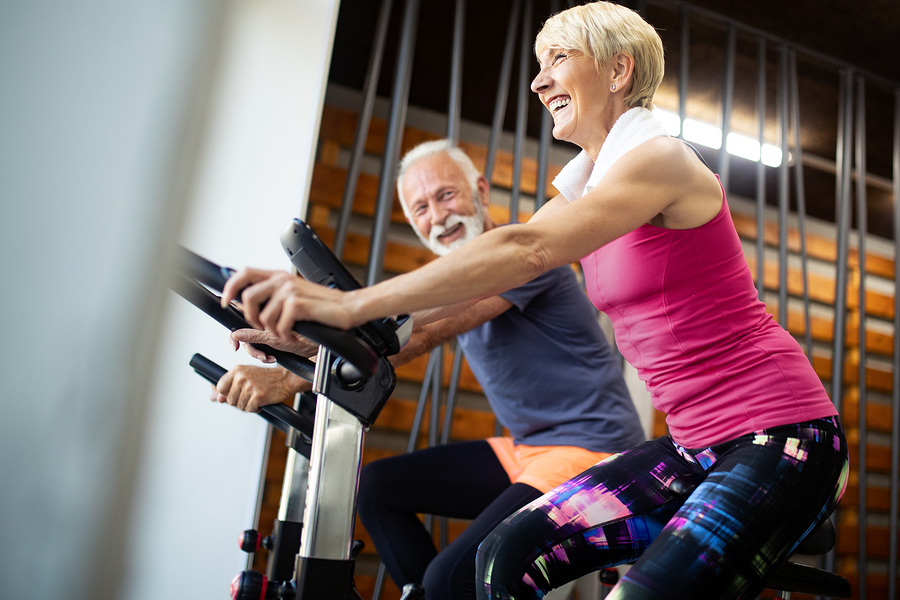Exercise to lower blood pressure
High blood pressure is a common condition in the UK with over 16 million of us reported to be living with it, so how can we help ourselves to bring these numbers down?
A recent diagnosis of high blood pressure may leave you anxious about exerting yourself through exercise, but rest easy – along with numerous other benefits, exercise is perfectly safe and can even help to lower blood pressure!
So where do you start? Hand in hand with getting more exercise you should consider what you are eating. Salt should be eliminated from your diet as much as is practicable and you should aim to maintain a healthy weight.
It is also advisable to check with your doctor first before embarking on any new exercise regime, especially if you have other medical conditions.
Read more on how to cut back on salt.
What type of exercises should we be doing?
The best type of exercise is that which makes you moderately out of breath. Any type of aerobic exercise counts such as fast walking, jogging, cycling or swimming but equally dancing, mowing the lawn and digging in the garden count too. All of these activities can help to reduce blood pressure by up to 10 per cent.
Kick start your aerobic exercise by learning how to start running.
High blood pressure can be reduced further if you add some resistance training to your moderate aerobic exercise. And there are other benefits too:
- Your muscle strength will increase
- Your muscle mass will increase – this is especially important in older adults
- The way your body handles blood sugars will improve (metabolic regulation)
- Your bone mineral density will improve and should reduce the risk of developing osteoporosis
Discover how to prevent osteoporosis through exercise.
How much exercise should we do?
As a general rule you should aim to increase your heart rate to approximately 60% of maximum. Maximum heart rate is calculated at around 220 beats per minute minus your age.
But it is important not to overdo it for the first few minutes as your body warms up or for the last few minutes as you wind down.
Aim for 2.5 hours of moderate exercise across the week (e.g. 30 mins per day for 5 days). Build your stamina up gradually. It is important to listen to your body and stop if you feel pain, excessive breathlessness, if you feel sick or faint. If you exercise regularly your blood pressure should start to lower after a few weeks.
Is there any exercise we shouldn’t do with high blood pressure?
Heavy weight lifting may place too much strain on the heart and blood vessels and so should be avoided in someone with high blood pressure.
Parachuting and scuba diving may also be dangerous activities if your blood pressure is not being controlled.
Types of aerobic exercise to help reduce high blood pressure
It is a good idea to vary the type of exercise you do as in that way you will be working a variety of muscle groups and may stop it getting boring!
The following exercises are worth giving a go:
- 40 minutes fast walking – best undertaken on soft ground. Try including some short hills to get your heartrate up and vary your route as much as you can.
- 40 minutes cycling – add in a few hills or increase your speed to get your heart rate up. This can be achieved on a stationary exercise bike too.
- 30-40 minutes swimming – aim to get out of breath and raise your heart rate. Include a few short bursts of faster swimming if you can.
- 30-40 minute aerobic exercise class – you don’t have to go at it full pelt as moderate exercise, where you can still hold a conversation, is enough to lower blood pressure, so go at the pace which suits you. Remember to warm up first so not as to risk injury.
- 60 minute racquet sport – aim to achieve a steady workout with a rally rather than a competitive game.
- 30 minutes on a cross trainer or rowing machine – the monitor on an exercise machine will help you to keep a steady level of aerobic activity.
Some final tips
Try and find exercise that you enjoy as you are more likely to stick with it. If you prefer resistance-based exercises rather than aerobic training then give that a go instead or alternate between the two.
Remember not to hold or push against your breath while exercising – breathe normally and you should see some amazing results!
Click on our diet and exercise section for lots of articles on how to eat healthily and stay active.
Disclaimer
All content on Silversurfers.com is provided for general information only, and should not be treated at all as a substitute for the medical advice of your own doctor or any other health care professional. Silversurfers will not be responsible or liable for any diagnosis made by a user based on the content on www.silversurfers.com and we are also not liable for the content of any external websites or links from or to Silversurfers to any other websites. Please always consult your own doctor if you’re in any way concerned about any aspect of your health
Melina - Assistant Editor
Latest posts by Melina - Assistant Editor (see all)
- Cream Cheese Orange Bars - May 2, 2024
- Top tips for hay fever sufferers - April 14, 2024
- Paysan Breton Cream Cheese Breakfast Wraps - April 12, 2024
- 4 Homemade Sweet Treats for Easter - March 24, 2024
- Playground Memories - March 10, 2024





















